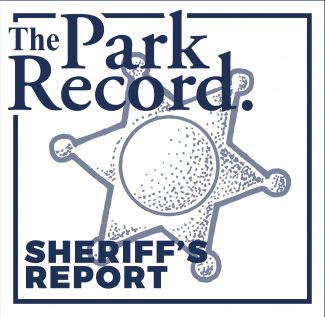Basin Rec and volunteers combat Dyer’s woad by hand
The Park Record

Clayton Steward/Park Record
Patches of bright yellow that tips nearly into neon hues make up many open fields and stretches of road and trailside during late spring along the Wasatch Back. This highlighter-colored flower is known as Dyer’s woad and is out of place in Summit County and the rest of the United States. And so volunteers yank the plant out of the ground wherever they can.
Maddie Nelson, open space supervisor at Snyderville Basin Special Recreation District, was part of the team leading a volunteer weed pull to help in the management of the nuisance flora she described as “branching umbrella of yellow flowers” that are “almost yellow green like a tennis ball.” The Utah State University Extension lists the woad as a class two noxious weed, a priority for controlling its spread.

“Hand pulling is really effective because you remove those seeds from the system,” Nelson said. With consecutive treatment every year, progress can be made on irradiating Dyers woad from an area. “After seven to 10 years you can really see a reduction in the number of plants,” she said.
Volunteers Emma Paulides and Katie Noelck, alongside a handful of others, were part of the force pulling weeds near the Willow Creek Dog Park pond. Outfitted with gloves and armed with hand clippers, the volunteer team worked to remove the now-wilting flowerheads and place them into black trash bags.

Herbicide is sometimes a necessary approach, but weed pulls like the one on Friday morning are effective at stemming the ability of the plant to drop seeds back into the soil.
The plant was introduced to Utah in the mid 1800s as a way to access indigo dye. When processed, the plant releases a blue hue that was once used for dyes. The importance of controlling Dyer’s woad and other noxious weeds is due to their competition with native species.
“By supporting native species, we’re really supporting pollinators and flora and fauna that exist in nature,” Nelson said, mentioning the over 1,000 native bee species in Utah as well as butterflies and other pollinators. “It can be hard if you don’t know what a noxious weed is.”
Nelson said that the Summit Cooperative Weed Management Area is a good local resource to find more information about how to manage noxious weeds on private properties.
There is one more weed pulling event sponsored by Basin Recreation tentatively planned for July, but the window to pull Dyer’s woad and garlic mustard, another noxious weed, closes soon because it can be more harmful to disturb the plants when they have seeded out. The risk of further spreading seeds outweighs the option to let the plant stay where it is, in hopes of eradicating the stand of noxious weeds the following season.


Basin Rec and volunteers combat Dyer’s woad by hand
Patches of bright yellow that tips nearly into neon hues make up many open fields and stretches of road and trailside during late spring along the Wasatch back. This highlighter-colored flower is known as Dyer’s woad and is out of place in Summit County and the rest of the United States. And so volunteers yank the plant out of the ground wherever they can.
Sheriff’s Report: Man arrested on I-80 for driving more than five times the legal limit
The Summit County Sheriff’s Office responded to several other calls between Monday, June 17, and Sunday, June 23, including reports of theft, injury accidents and active wrrants.

Support Local Journalism

Support Local Journalism
Readers around Park City and Summit County make the Park Record's work possible. Your financial contribution supports our efforts to deliver quality, locally relevant journalism.
Now more than ever, your support is critical to help us keep our community informed about the evolving coronavirus pandemic and the impact it is having locally. Every contribution, however large or small, will make a difference.
Each donation will be used exclusively for the development and creation of increased news coverage.









